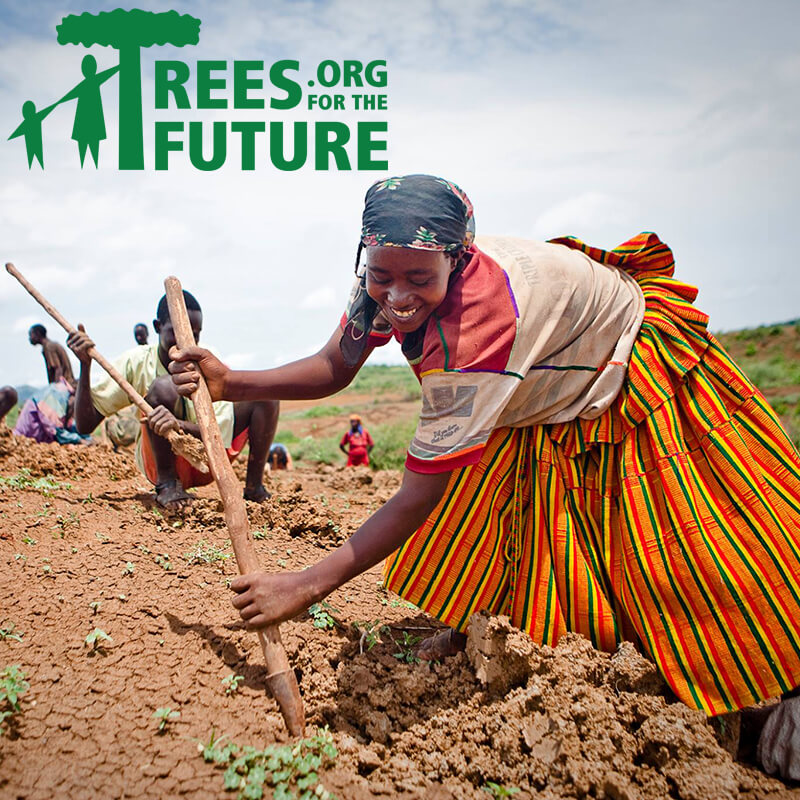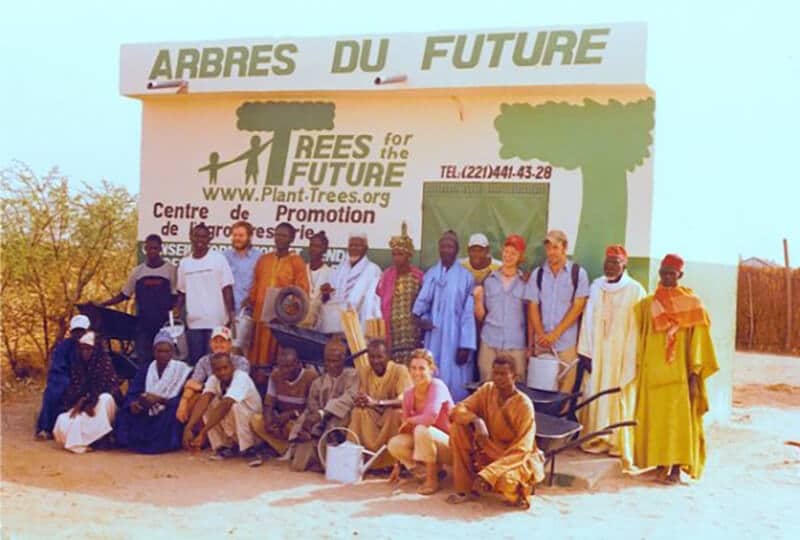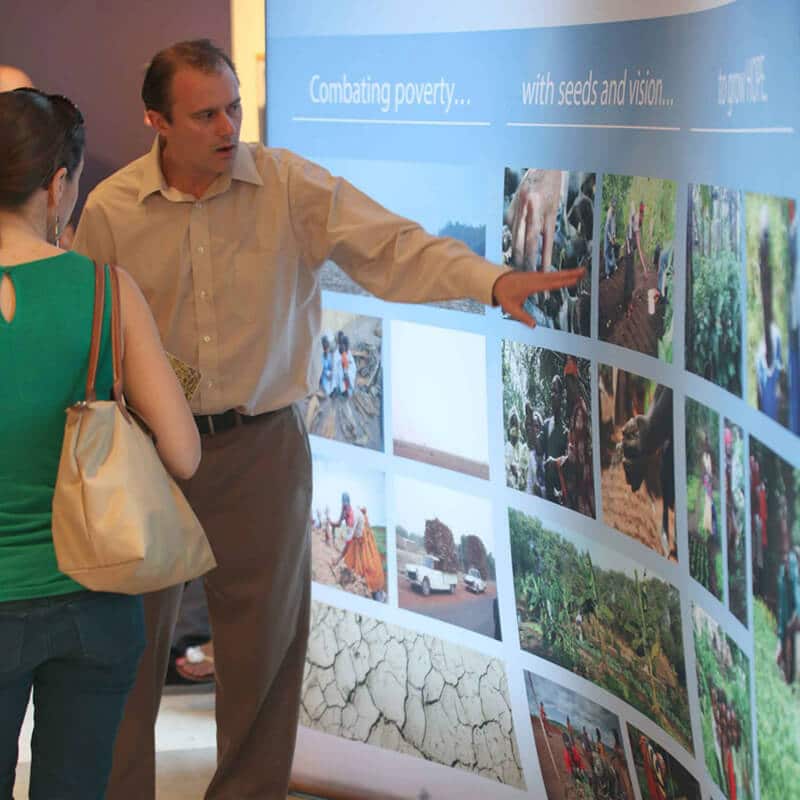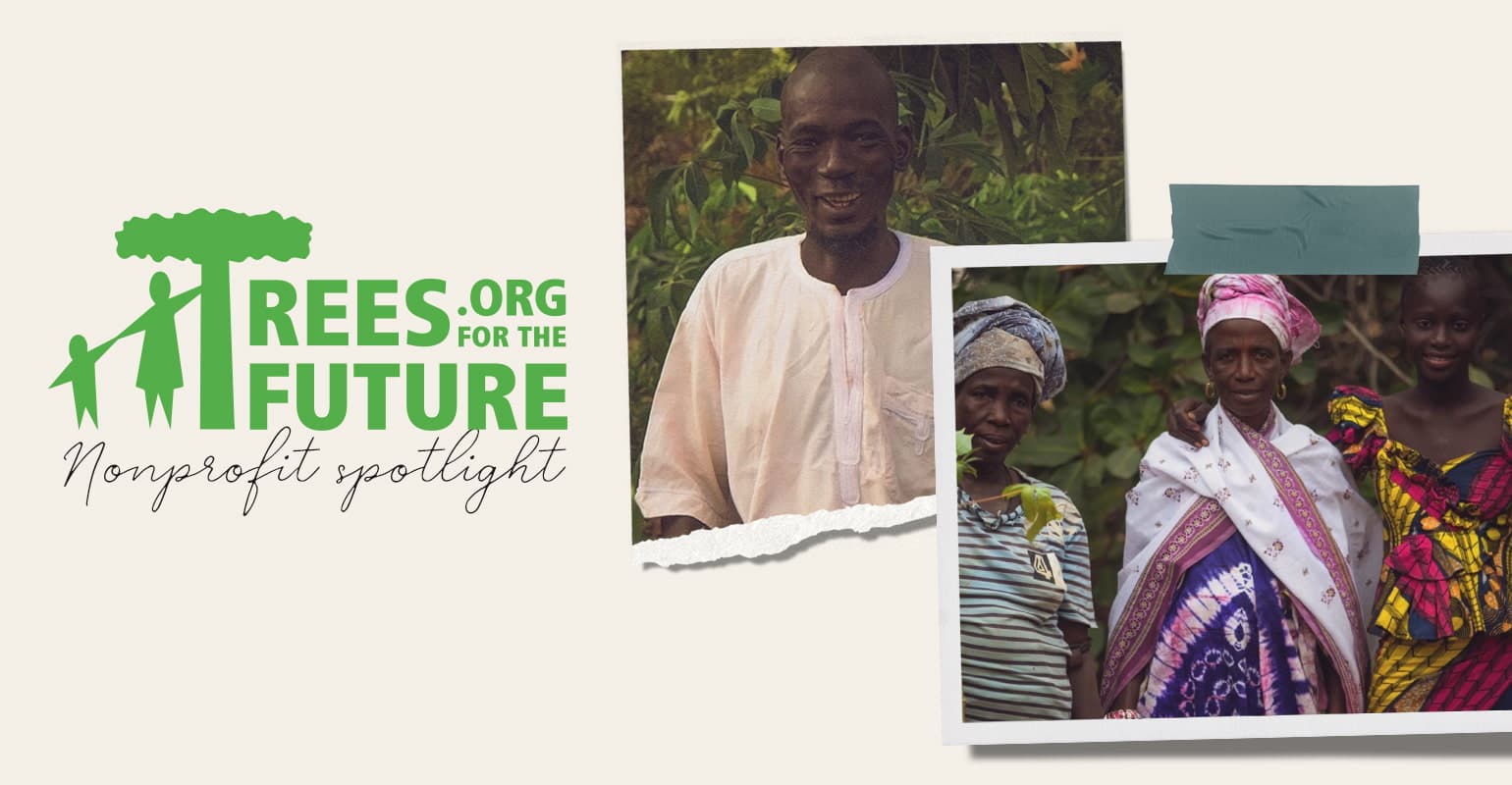Planting trees is a promise to a better future — for the planet and everyone on it. And efforts to plant trees don’t just protect the physical environment itself. This work can also help regenerate land, restore sustainable food supplies, and bring shared health and healing to communities around the world.
As the need to mitigate the effects of climate change and ensure a viable earth become ever more urgent, it’s heartening to take time to highlight organizations that are leading the way.
Trees for the Future is one such standout. This nonprofit is dedicated to ending poverty and hunger through training programs that help farmers bring back nutrients to their soil to grow a wider variety of fruits and vegetables — improving farmer income, community food access, and the environment in one holistic approach.
What is Trees for the Future?

Trees for the Future is a 501(c)(3) nonprofit organization whose mission is “to end hunger and poverty by training farmers to regenerate their land.” They work in five sub-Saharan countries in continental Africa — Kenya, Mali, Senegal, Uganda, and Tanzania — on implementing the Forest Garden Approach, a method for restoring soil by planting a diverse variety of trees, including food-bearing trees. Tree for the Future also works in Cameroon, Chad, Central African Republic and Mali through collaborative partnerships.
Trees for the Future History
Trees for the Future has deep roots in this regenerative work. The seeds of its efforts were planted in the 1970s, when co-founders Dave and Grace Deppner were volunteering in the Philippines to help with land restoration in the aftermath of “illegal logging and unsustainable land management systems.”
Working in concert with local leaders, Dave and Grace “revitalized lands by providing farmers with tree seeds, technical training, and on-site planning assistance.” The nonprofit was officially founded in 1989.
How Trees for the Future Gives Back

Forest Garden Approach
The keystone to Trees for the Future’s essential work, the Forest Garden Approach is a strategic agroforestry methodology that incorporates trees into growing food — it’s actually a very old method. Where modern agriculture ultimately damages land in trying to get as much (of usually one specific crop) as possible, forest gardens benefit include trees, shrubs, fruits, vegetables, and more in harmony to put nutrients back into the soil and ecosystem.
Through a thoughtful, guided 4-year training program, Trees for the Future familiarizes farmers with this approach so they can improve the land and their livelihoods.
Expansion, Collaboration, Replication, & Training Sites
Also important in facilitating the best possible outcomes for farmers is understanding where positive efforts already exist. In the case of Trees for the Future, this means collaborating rather than starting from scratch with organizations or farmers utilizing sustainable practices, integrating agroforestry and permaculture training into ongoing good work.
Trees for the Future also has also established training sites across the countries in which they work. Farmers experienced in the forest garden approach “can ‘Plant it Forward’ and train neighboring farmers in a condensed version of the program.”
Creating Gender Parity
Another element that informs how Trees for the Future carries out its work is the current state of the agriculture industry in the developing world, which can be a difficult environment for women. Trees for the Future works to ensure at least 30% of the program participants are women. In this way, women have a seat at the table when the organization introduces sustainable agriculture to the communities it serves, enabling them to become leaders in land restoration, agroforestry reforestation, and long-term solutions to climate change, hunger, and poverty.
Impact and Future Plans for Trees for the Future

It’s inspiring to consider just how much Trees for the Future has accomplished in three-plus decades of environmental regeneration work. Since its founding in 1989, Trees for the Future has accomplished the following:
- Planted 219 million trees
- Helped restore 30,000 acres of degraded lands in over 60 countries in Asia, Africa, and the Americas
- Planted 30 million trees in 2020, despite the challenges presented by the COVID-19 pandemic, averaging 3,510 trees planted every hour
- 19,095 forest gardens planted since 1989 (per Trees for the Future’s 2020 impact report)
- Directly benefited the lives of 202,734 people
- The Forest Garden Approach increases access to nutrition by more than 500%
In 2021, Trees for the Future has set a goal to plant 50 million trees and the nonprofit is on track to meet that goal. The organization also aims to plant 125,000 forest gardens by 2025.
How to Support Trees for the Future
Trees for the Future supporters can donate directly to the nonprofit via their website, donate your cash back to Active Minds with Giving Assistant when shopping online, or explore other options for giving. You can also look into ways to get involved in the effort.
When we work together, we can accomplish amazing goals, like creating a world with more green, more trees, more food, and more prosperity and wellbeing for all.
What is Giving Assistant?
Giving Assistant helps online shoppers turn their everyday shopping into charitable giving.
Members get exclusive coupons and savings at thousands of top online brands, plus earn cash back they can donate automatically to any nonprofit organization in the U.S.
Nonprofits who partner with Giving Assistant can reach their fundraising goals with ease by receiving these shopper donations.
Our browser extension makes giving a seamless part of shopping. Just install the free Giving Assistant Button to effortlessly shop, save, and donate to causes important to you.

